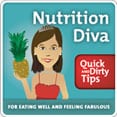 Think the debate over the national debt was contentious? That’s nothing compared to the war being waged in scientific circles about how much sodium it’s safe to eat. As researchers duke it out in the pages of medical journals, poor consumers are caught in a cross-fire of contradictory recommendations. In this week’s podcast, I tell you what you need to know to stay out of trouble. Read or listen to it here.
Think the debate over the national debt was contentious? That’s nothing compared to the war being waged in scientific circles about how much sodium it’s safe to eat. As researchers duke it out in the pages of medical journals, poor consumers are caught in a cross-fire of contradictory recommendations. In this week’s podcast, I tell you what you need to know to stay out of trouble. Read or listen to it here.

Hey There,
What’s your stance on Sea Salt? I switched from using regular salt to sea salt and cut out most of my processed foods and regulated my blood pressure. Do you think that perhaps besides processed foods, it’s not just about the salt, but the kind of salt?
I actually overheard a woman at the supermarket trying to convince her daughter that sea salt was “better for your” because “it has less salt”.
Unfortunately, every type of salt is almost entirely Sodium Chloride, and it’s the sodium in that molecule that has an impact on health.
Kosher or sea salts are sometimes recommended as strategies to reduce salt intake because they are lower in density, so if you sprinkle the same amount on by volume, you get less sodium than if you used table salt.
Companies sometimes try to lower sodium content by using extremely fine-powdered salts, which dissolve more quickly on the tongue and so give a salty taste with less actual sodium. Fleur de Sel is a commercial fine-grained salt.
Unfortunately, none of these techniques work if the salt you’re using is going to be dissolved anyway. Chemically they’re all the same.